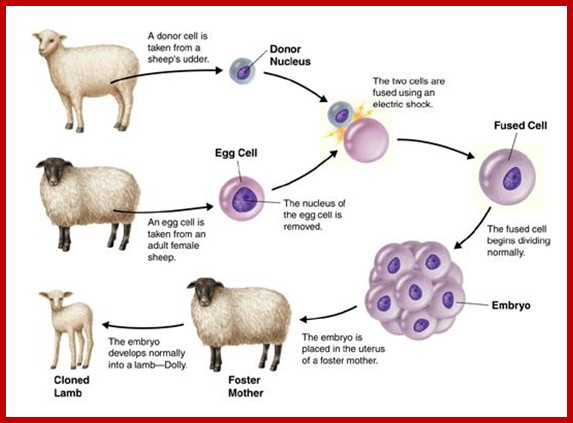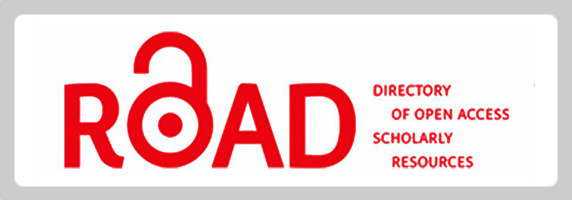Application and Constraints of Reproductive Biotechnology in Livestock Production: A Review
Abstract
Raising livestock is a significant economic and cultural activity in Ethiopia. Animals are raised for a variety of agricultural products, including milk, meat, eggs, wool, and traction power, but because of their low productivity, livestock owners are unable to meet both their own needs and the demand for animal products from consumers, which adds to food scarcity and insecurity. Therefore, to meet the need for additional animal products, animal production must be improved more so than livestock production. Production systems are struggling with the importance of livestock production to economic progress. Therefore, intensification and modification of several naturally occurring reproductive processes for the advantage of livestock owners and customers have become crucial issues. Despite significant limitations, the use of biotechnologies like estrus synchronization, artificial insemination, and embryo transfer can improve animal productivity and production by resolving issues with conventional and inefficient production techniques.
Downloads
References
Allcock, J., and Peters, A. (2004). Pharmacological manipulation of reproduction. In: Bovine medicine disease and husbandry of cattle.2nd ed. black well publisher, Pp. 678-688.
Althouse, G. (2007): Artificial Insemination, In: Schatten, H. and Constantinescu, G.M. (Eds.) Comperative Reproduction Biology, 3: 159-169.
Andrews, A., Blowey, R., Boyd, H., and Eddu, R. (2004): Bovine medicine disease and husbandry of cattle 2nd Blackwellpublisher, Pp. 627-688.
Arthur, G., noakes, D., Parkinson, T., and Gray, C. (2003): Artur’s Veterinary reproduction and obstetrics.6th ed Bailliere Tindal, Pp. 3-69,560-619.
Artur. G., Noakes, D. and Harlod, P. (1992): Veterinary Rreproducyive and obstetirics. 6th.Bailliere Tindal, Pp. 3-69, 560-619.
Azage, T., Lahou-kassi, A., and Mukasa-Mugerwa, T. (1993): Biotechnology in animal production. Proceeding of the 2nd ed national conference of Ethiopian society of animal production, Pp.49-80.
Bearden, H. and Fuquay, J. (2000): Applied animal reproduction.5th ed. Prentice Hall, New Jersy, Pp. 60-248.
Bll, P. and Larsen, L. (1992): Regulation of oestrus cycle in dairy cattle. Theriogenology, 38: 255-267.
Blowey, R. (1990): A Veterinary Book for Dairy farmers.2nd ed. Farming Press Ltd, Pp. 229-277.
Bonneau, M. and Laarveld, B. (1999): Biotechnology in animal nutrition, physiology and health. Livest.Prod. Sci, 59:223-241.
Christie, W. (2003): Embryo Transfer in Large Domestic Animals.In:Artur’sVterinary Reproductive and Obstetrics .8th ed .Elsevier Science Ltd, Pp. 819-936.
Consult web site : http://animalscience.ag.utk.edu/Beef/Publications-Beef.html http://animalscience.ag.utk.edu/beef/pdf/EstrousSynchronization-FMH.pdf [Accessed: 11 Mar 2015].
DeJarnette, J. (1999): Factors affecting the quality of frozen semen after thawing. In: Proc. Soc. Theriogenology, Pp. 267-276.
Engidawork, B. (2018). Artificial insemination service efficiency and constraints of artificial insemination service in selected districts of Harari national regional state, Ethiopia. Open Journal of Animal Sciences, 8(3), 239-251.
Escobar, J., Partridge, C., & Deutsch, D. (1994). Flow synchronization protocol. IEEE/ACM transactions on Networking, 2(2), 111-121.
Field T. and Taylor R. (2001). Scientific Farm Animal Production.7th ed. Prentice HallInc, Pp. 173-238
Flavell, R. (1999). Biotechnology and food and nutrition needs: biotechnology for developing-country agriculture:
Food and Agriculture Organization (FAO). (2004). The State of Food and Agriculture 2003-2004. Agricultural biotechnology: meeting the needs of the poor. FAO, Rome, 209, Pp.
Food and Agriculture Organization (FAO). International Atomic Energy Agency (IAEA). (2004): (FAO)/ Final report
Galloway, D. & Perera, O. (2003). Guidelines and recommendations for improving artificial breeding of cattle in Africa. A working document of the AFRA Project III-2(RAF/5/046).
Gamborg, C. & Sandoe, P. (2005). Sustainability in farm animal breeding. A review. Livestock Production Sci, 92: 221-231.
Gary, C. (2005). Fertility and Obstetrics in the horse.3rd ed. Black well publishing Ltd, Pp. 190-199.
GebreMedhin, D., Bekana, M., Tegegne, A., & Belihu, K. (2009). Status of artificial insemination service in Ethiopia.
Gustafsson, H. & Emanuelson, U. (2002). Characterization of the Repeat Breeding Syndrome in Swedish Dairy Cattle. Acta Veterinarian Scandinavica, 43:115-125.
Heuwiseser, W. and Oltenacu, P. (1997). Evaluation of different protocols for PGF2α synchronization to improve reproductive performance in dairy herds with cow oestrus detection.Theriogenology, 49: 559-570.
Hunter, R. (2003): Advances in Deep Intrauterine Insemination: A Fruitful Way Forward to Exploit New Sperm Technologies in Cattle. Animal Reproduction Science, 79:157-170.
Kelay, B.(2002). Analysis of dairy cattle breeding practice in selected area of Ethiopia, phD Thesis,humboldt university of Berlin, Department of Animal Breeding in the Tropics and Subtropics,Berlin,Germany, 19-41.
Madan, M. (2003). Opportunities and constraints for using gene-based technologies in animal agriculture.
Madan, M. (2005). Animal Biotechnology: Application and economic implication in developing countries. Technique office International des Epizooties, 24:127-139.
Nadir, S., Saacke, R. Bame, J. Mullins, J. & Degelos, S. (1993). Effect of freezing semen and dosage of sperm on number of accessory sperm, fertility, and embryo quality in artificially inseminated cattle. Journal of animal Science, 71:199-204.
National Artificial Insemination Center, (1995). Short description on the activity of NAIC.Addis Ababa Univeristy, Pp. 2-3.
Niemann, H. (2003). Improvement of the Health Status of Livestock Population by Reproductive Biotechnological Technologies. Biology of Reproduction, 75(5):401-413.
Nordin, Y., Zaini, N. & WAN Zahari, W. (2007). Reproductive status following artificial insemination and factors affecting conception rate in dairy cows in smallholder production systems, Pp. 79-91.
Parker, R. (1998): Equine scince.1sted.Delmar publishers, Pp. 254-280.
Parkinson, T. (2009): Artificial insemination. In: Noakes. D., Parkinsson, T. & England, G. (Eds.) Veterinary Reproduction and Obstetrics. Ninth edition, Pp. 765-806. Elsevier Ltd.
Peake, K., Biggs, A., Argo, C, Smith, R., Christley, R., Routly, J. & Dobson, H. (2011). Effects of lameness, subclinical mastitis and loss of body condition on the reproductive performance of dairy cows. Veterinary Record, Pp. 168, 301.
Philipsson, J. & Jorjani, H. (2009). The importance of recording of AI data for the genetic systems. The context of AI from service to genetic progress.
Rodriguez, H. (2012): Assisted reproductive techniques for cattle breeding in developingcountries: a critical appraisal of their value and limitations. Reproduction in Domestic Animals, Pp. 47, 21-26.
Sasson,A.(1988):Biotechnology and Development.UNESCO/Techinical Center for Agiriculture and Rural Cooperation, Paris and Netherlands, 15-36.
Sisay, W., Tamene, D., Worku, G., Kidanu, D., Getahun, B., & Nuraddis, I. (2017). Evaluation of artificial insemination efficiency in and around Ejere District, Western Shoa Zone, Ethiopia. Journal of Reproduction and Infertility, 8(3), 66-71.
Smith, A. (2004): Embryo transfer in large domestic animal. In: Bovine Medicine Disease and Husbandry of cattle.2nd ed.Black well puplisher, Pp. 634-652.
Taneja, V. & Birthal, P. (2004). Animal husbandry entrepreneurship and policy support. Multi-enterprise system for viable agricultur.
Thibier, M. (2005). The zoo technical applications of biotechnology in animal reproduction: current methods and perspectives -a review. Reproduction Nutrition Development, 45: 235-242.
Van Vleck, L. (1981): Potential genetic impact of artificial insemination, sex selection, embryo transfer, cloning and selfing in dairy cattle. In: Brackett BG, Seidel GE, Siedel SM (eds), New Technologies in Animal Breeding, Pp. 221-242.
Walsh, R., Leblanc, S., Vernooy, E. and Leslie K. (2008). Safety of a progesterone releasing intravaginal device as assessed from vaginal mucosal integrity and indicators of systemic inflammation in postpartum dairy cows. Canadian Journal of Veterinary Research, 72 (1): 43
Woldu, T., Giorgis, Y. & Haile, A. (2011). Factors affecting conception rate in artificially inseminated cattle under farmer’s condition in Ethiopia. Journal of Cell and Animal Biology, 5: 334-338.
Wrathall, A., Simmons, H., Bowles. D. (2004). Biosecurity strategies for conserving valuable livestock genetic resources. Reprod Fert Dev, 16: 103-112.
Yousuf, M. (2021). Challenges and opportunities of artificial insemination on dairy cattle in Ethiopia. Research Horizon, 1(2), 47-54.

Copyright (c) 2023 Temesgen Kassa Getahun

This work is licensed under a Creative Commons Attribution-NonCommercial-NoDerivatives 4.0 International License.










